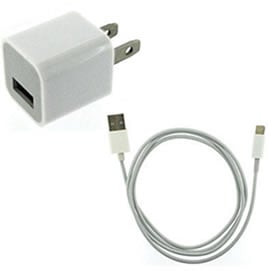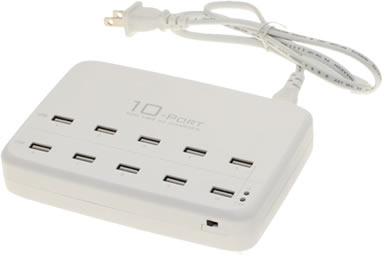USB charging overview
Today’s technology offers so many different ways to charge devices that use USB either by wall outlet, computer, USB hub, or station. Whether you are using an iPhone, iPad, Tablet, or other device that depend on USB connections for charging, you need to use the proper tool for the job.
Typically the charger you would use is the stock travel charger your device comes with but often times that become damaged or lost.
Proper use of your stock charger
Out of the box, generally you receive a wall charger and USB cable for charging, proper care ensures that these to items will last and here’s what to do to make sure they do.
- Always plug your wall adapter into the wall outlet for proper voltage input into the adapter for charging.
- Always plug your cable into the charging adapter before connecting your phone or tablet, and then securely connect your device.
- When disconnecting, you should NOT pull on the cable to remove it from the adapter or the phone, this eventually will cause wire damage to the cable and could damage your phone’s internal circuits in an attempt to charge. Always remove the connection by pulling the connector to disconnect the circuit.

Using a USB charging station
With mass amounts of people in public places or large family’s that have to charge devices, there just aren’t enough wall outlets to go around, this is where the use of USB charging stations apply in public or private areas, in the office or in the home. USB charging stations are a great way to assure that the correct electrical current is being used to charge your device whether it’s a digital camera, mobile phone or tablet.
Charging station general specifications

As mentioned, we charge various USB enabled devices but we lose or damage the chargers and cables we have somewhere along the way and as a result, purchase new chargers over and over. This type of charger produces a steady charging current to each of its ports for consistence whether it’s 1, 5, or 10 devices connected.
The key to charging devices
The key to charging your mobile device properly is making sure that you have the correct voltage and amperage rated for the device you are charging, iPads, and tablets or devices requiring a maximum of 2.4A or 1A will charge properly with this type of charger.
If you use a computer to charge your phone, keep in mind that it will take just about double the amount of time to charge because your computer’s USB port will only spare .5A to your device for charging, this is a computer’s output to the USB port and typical using USB 2.0.
Laptops, PC’s, or USB hubs that are to USB 3.0 Specifications can distribute 900mA (.9A) for normal charging of mobile devices as long as those devices are rated for the current. Even at 900mA, charging an iPad would be slow going since it requires 2.1A to charge.
To this point we have talked about voltage and charging current as it relates to the device charging requirements, briefly we should also mention the USB cable itself. An aspect of charging phones and tablets that no one really thinks about is the cable being used, we buy them from the store and wonder why there is still a slow charge. The USB cable is what carries the voltage and current to the connection where the current is distributed, the gauge of the wire in the cabling is what determines the specification of the cable and how much current can pass through it. Typically, the O.D (outer diameter) of USB 2.0 is 3.8 to 5.0 +/- 0.2mm depending on the AWG being used, USB 3.0 gauge wire diameter is 6.0 +/- 0.2mm and this is where the power difference comes into play when using the proper cable.
USB Charging stations are the way to go and are specifically designed to handle the power and current requirements that need to be distributed for charging mobile phones and more.
